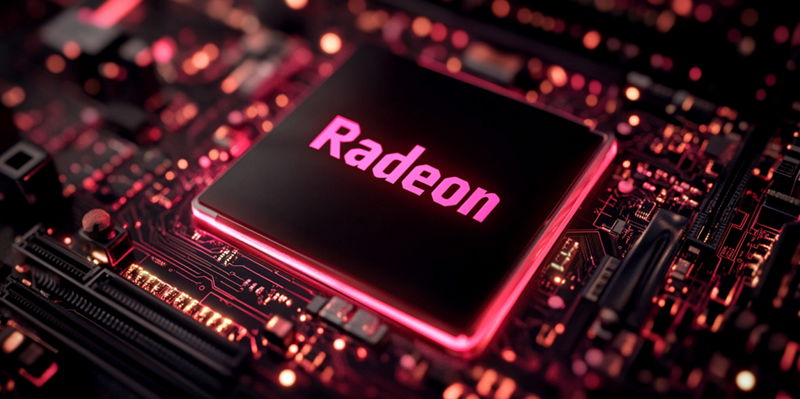In a rapidly evolving technological landscape, AMD is gearing up for another significant leap with its Radeon RX 8000 "RDNA 4" Mobile GPU lineup. This announcement is building anticipation among tech enthusiasts and professionals alike. This new series promises to offer a robust set of features, ensuring that AMD stays competitive in the high-stakes game of mobile graphics technology. As we delve into the specifics, the emphasis rests on the range of configurations, expected performance upgrades, and the overall impact on the mobile computing market.
Specifications and Expected Variants
Navi 48 GPU-Based Models
One of the standout features of the Radeon RX 8000 series is its implementation of the Navi 48 GPU architecture. The models R25M-E6 and R25M-E4 are expected to set the stage with impressive performance benchmarks. The R25M-E6 model boasts 16 GB memory with a 256-bit configuration, ensuring high-speed data transfer and efficient processing capabilities suitable for demanding applications and intense gaming sessions. Its counterpart, the R25M-E4, although slightly more conservative with 12 GB memory and a 192-bit configuration, is poised to offer a balance between performance and power consumption. Both models are designed with Thermal Design Power (TDP) ranges between 80W and 175W, ensuring scalability for a variety of laptop form factors, from ultrathin to gaming behemoths.
The introduction of these models marks a significant step forward from the previous generation GPUs like the Radeon RX 7900M and RX 7800M, which utilized the Navi 31 and Navi 32 architectures respectively. While official figures on memory speeds for the RDNA 4 GPUs remain under wraps, speculation points towards them incorporating similar speeds to their desktop counterparts, ranging from 18 to 20 Gbps GDDR6. This upgrade would ensure a substantial improvement in bandwidth and performance, aligning with the growing demands of modern software applications and gaming titles. By integrating these technologies into their mobile lineup, AMD is showcasing their commitment to providing top-tier mobile graphics solutions.
Navi 44 GPU-Based Models
Following the performance-oriented Navi 48 models, the Navi 44 GPU-based models R25M-P6 and R25M-P4 cater to users looking for balanced performance in more affordable packages. The R25M-P6 features 8 GB memory with a 128-bit interface, addressing the needs of users who require substantial performance without the premium price tag. It supports TDP ranges from 75W to 150W, making it a versatile option for various laptop designs. On the other hand, the R25M-P4, also equipped with 8 GB memory but with slightly more modest TDP figures ranging from 50W to 130W, serves as an efficient yet capable solution for entry-level requirements. These configurations resonate with a broader audience, emphasizing the adaptability of the RDNA 4 architecture across different market segments.
The broader market implications of these models are significant. Compared to the current entry-level GPUs like the RX 7600M XT and RX 7600M, the Navi 44 models represent a stride in efficiency and power optimization. This suggests a trend where AMD is not only focusing on high-end users but also providing high-performance options for budget-conscious consumers. The competition heats up as these models are poised to challenge NVIDIA’s offerings, positioning AMD as a strong contender in the mobile GPU market. As laptops continue to be the preferred computing device for many, the demand for advanced graphics solutions that cater to diverse needs is only set to grow.
Product Lifecycles and Historical Context
Generational Shifts in AMD’s RDNA Architecture
To understand the significance of the Radeon RX 8000 lineup, it is essential to explore the journey of AMD’s RDNA architecture. From the inception of RDNA 1, which debuted on a 7nm process node, to the upcoming RDNA 4, AMD has consistently pushed the boundaries of what’s possible in the realm of mobile graphics. Each generation has seen improvements in Shader Engine (SE) configurations, Streaming Processor (SP) counts, and overall architectural efficiency. RDNA 3 brought a refinement in terms of performance per watt, setting a high bar for RDNA 4 to surpass. With RDNA 4, AMD is expected to leverage a more advanced 4nm process node, indicating a leap forward in transistor density and power efficiency.
This evolution is crucial for maintaining a competitive edge against fierce rivals. The advancements across different generations signify incremental yet impactful changes that have culminated in the anticipated RDNA 4’s superior performance metrics. Looking at past launches, from the RX 6000M series to the recently unveiled RX 7000M series, each iteration has built upon the successes and learnings of its predecessor. By addressing performance bottlenecks and optimizing power consumption, AMD has positioned itself as a key player in the industry. RDNA 4 is set to continue this tradition, with extensive improvements expected across bandwidth utilization, speed, and overall graphical output.
Entry-Level and Advanced GPU Market Placement
In a swiftly shifting technological arena, AMD is preparing to make another major advancement with its Radeon RX 8000 "RDNA 4" Mobile GPU series. This revelation is stirring excitement among tech enthusiasts and industry professionals. The upcoming series is poised to deliver a powerful array of features, ensuring that AMD remains a formidable competitor in the highly competitive mobile graphics technology market. As we explore the details, the focus is on the diverse configurations, anticipated performance enhancements, and the significant influence this will have on the mobile computing sector.
Specifically, the Radeon RX 8000 series is expected to bring remarkable improvements in speed, efficiency, and overall graphical capabilities. With the integration of advanced architecture and cutting-edge technology, these GPUs are designed to elevate the user experience, whether for gaming, content creation, or professional applications. As AMD continues to innovate and push boundaries, the impact on the mobile computing market is likely to be substantial, further solidifying its position as a leader in the field.

